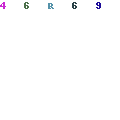Professors visit SIUE to discuss volunteering, politics in Mali
The people of Mali, Africa have the same dreams and goals as Americans, according to Jenifer Pilz Coulibaly, coordinator of foreign language labs at the University of Missouri-Columbia.

Jenifer Pilz Coulibaly, coordinator of foreign language labs at the University of Missouri-Columbia, spoke to students last week at SIUE about her volunteer efforts in Mali, Africa. Photo by Kari Williams
Pilz Coulibaly and Lindenwood University professor John Henschke discussed Mali, its political climate and their volunteer work in the country when they visited SIUE last week.
Pilz Coulibaly and Henschke’s work in Mali includes building a birthing clinic and a water well. Pilz Coulibaly said they entered the country to help raise the level of living in Mali.
Henschke said his church contributed money for the construction of a birthing room. In 2010, maternal mortality rates for Malian women with childbirth complications were more than 250,000.
Pilz Coulibaly said women do not have a safe place to give birth.
“That bothered me, and I wanted to do something about it,” Pilz Coulibaly said.
The birthing center, named Grace, Hope and Life Birthing Center, was completed earlier this month.
Pilz Coulibaly said how one approaches the development of a country has to be geared to the country a person is working in.
“Development isn’t a one-size fits all approach,” Pilz Coulibaly said.
Henschke and Pilz Coulibaly’s work also established a 10,000 liter water reservoir in Djuliba, Mali with solar panels to power the water supply.
With the help of other organizations, solar cookers were also provided.
The KickStart irrigation pumps that were integrated into Bamako, according to Henschke, raised the growing season from two to four.
Pilz Coulibaly said there is a KickStart office in Bamako and members met with the village to introduce them to the technology. It took five to six months of communication about the technology for the Bamako residents to accept the idea. The pump and irrigation systems cost, which is roughly $200, is the equivalent of a year’s salary, according to Pilz Coulibaly.
Other groups that have volunteered to help improve conditions in Mali include Missouri Partners, Baptist Women’s Group and Sisters of St. Francis.
History professor Anthony Cheeseboro, who organized the event, said Mali is a country that “really borders on two distinct lifestyles… and a couple of distinct cultural groups.”
At the end of the last ice age, the Sahara looked like the Serengeti, according to Cheeseboro, because it was grassland filled with animals that weight more than 100 pounds.
“As the desert grew, contact declined and eventually you have development of two distinct populations and two distinct lifestyles,” Cheeseboro said.
The desert acted as a barrier between movement of people and ways of life.
Lifestyles in Mali, according to Cheeseboro, are defined by ecology, and a major turning point in the history of the Sahara was the introduction of the camel, which occurred around the year 100 or 200.
Prior to the camel, people of Mali used donkeys, which Cheeseboro said are “fairly small” and can only go a few days without water, while camels can go 10 days without water and “revolutionized trade.”
Over time, however, there was a “struggle for power over the trade route,” according to Cheeseboro.
Over the last 160 years, Cheeseboro said there has been a shift in power in favor of the south due to French colonialism. The French, according to Cheeseboro, allied themselves with the southern farming population.
After the presentation, Pilz Coulibaly acted as a translator for Dontouma Koita of Mali, allowing students to ask questions.
Filed Under: Historical Studies












